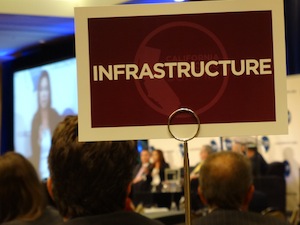
It costs more here.
California’s infrastructure was “designed for 25 million people”, state treasurer Bill Lockyer told an opening breakout session at the California Economic Summit in Los Angeles. The problem, he said, is that California will have 50 millon people before there’s a fix in place.
The focus was on roads and water – publicly funded projects – but it’s equally true for infrastructure that’s supported by private capital, such as telecommunications and energy.
That conversation was mostly about ways to funnel more tax dollars towards road maintenance and construction but as the conference moved on, the cost side of the equation took center stage.
The president of San Diego Gas and Electric, Mike Niggli, told how his company spent $100 million and five uncertain years working through regulatory obstacles, particularly environmental clearances, to get permission to build new transmission lines. The irony was that the lines were needed to connect San Diego’s electric grid to renewable energy sources advocated by environmentalists.
It’s a problem shared by broadband projects. The 500-mile Digital 395 middle mile fiber build down the eastern edge of California saw costs jump by $25 million due to the complexity of satisfying the requirements of four dozen different federal, state, local and tribal agencies.
Many ideas for fixing problems were put on the table, and the legislators and other elected officials, who came and went during the two days of the meeting, politely nodded their heads. The question is whether that’s enough to drive change in Sacramento.
“We have requirements that are overly burdensome, overly difficult and a barrier to investment in our state”, said Kish Rajan, the head of governor Brown’s business and economic development office. “This has to get translated into concrete action”.
